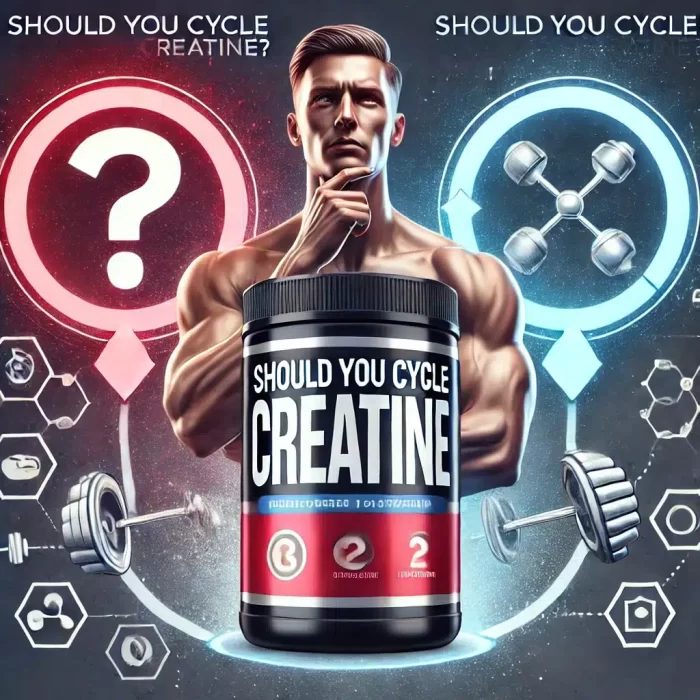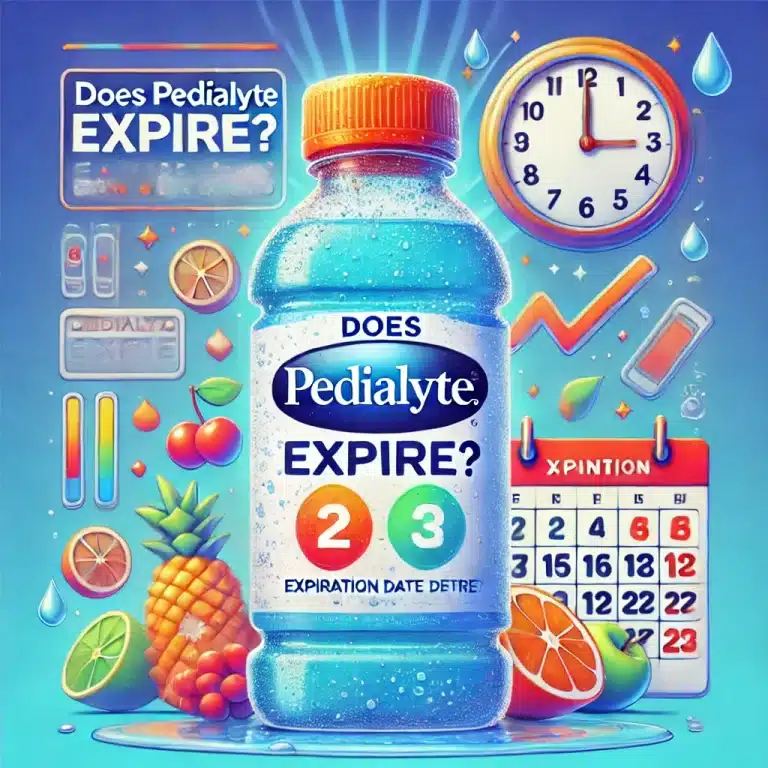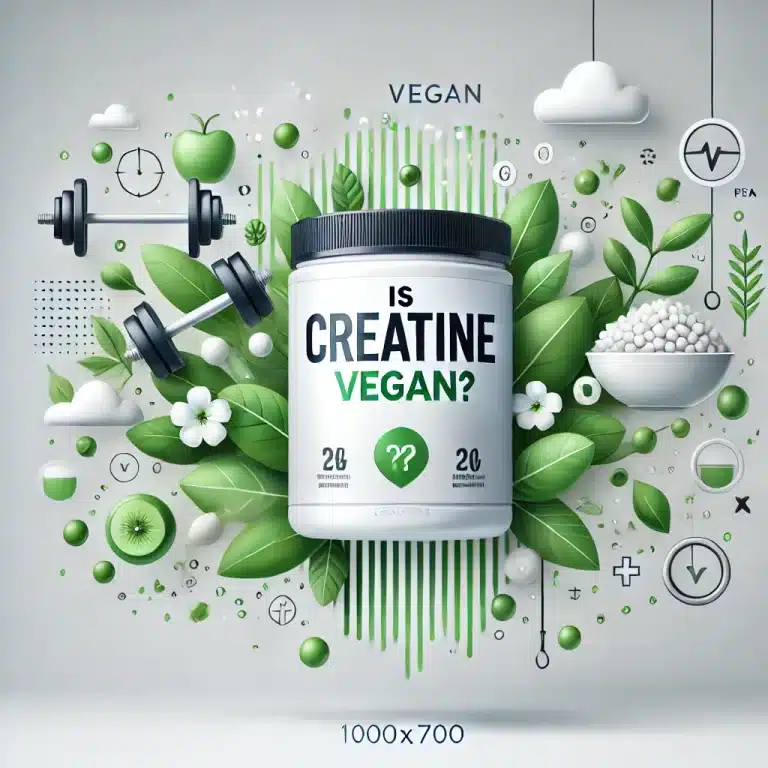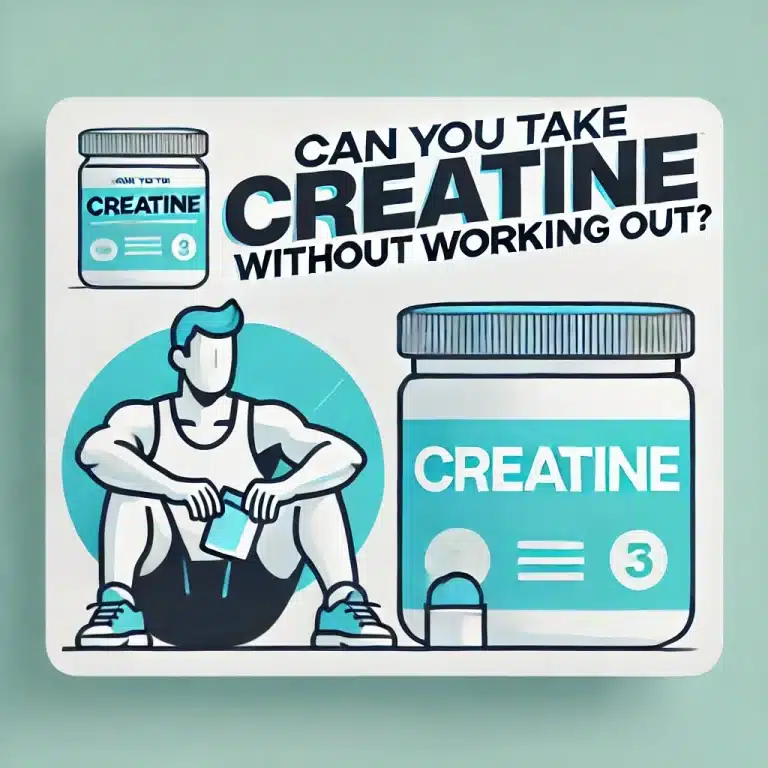Should You Cycle Creatine?
Creatine is one of the most researched and widely used supplements in the fitness world. It’s known for boosting muscle strength, enhancing performance, and improving recovery, but there’s still a lot of debate about whether you should cycle creatine or take it continuously.
As a nutritionist, I often hear questions like, “Do I need to take breaks from creatine?” or “Will my body stop producing it if I use it too long?”. The truth is, that cycling creatine isn’t always necessary, but there are some scenarios where it might be beneficial. Let’s break it down.
What Does It Mean to Cycle Creatine?
Cycling creatine refers to the practice of taking it for a set period and then stopping for a while before starting again. The idea behind this approach is to allow the body to reset its natural creatine production, prevent potential water retention, and possibly enhance the long-term effectiveness of supplementation.
Some believe that cycling helps the body avoid dependence, while others argue that continuous supplementation is just as effective. Unlike stimulants or hormones, creatine does not create a dependency or suppress natural production permanently, making it safe for long-term use. However, some individuals prefer to take periodic breaks to assess their performance without supplementation or to minimize potential bloating. Whether or not you should cycle creatine depends on personal preference, training goals, and how your body responds to continuous use.
Does Your Body Stop Producing Creatine If You Take It Continuously?
One of the most common concerns about long-term creatine supplementation is whether it reduces or stops the body’s natural creatine production. Some people worry that using creatine continuously might cause dependency, meaning their body would no longer produce it on its own. However, research shows that this is not a long-term concern.
The body naturally produces creatine in the liver, kidneys, and pancreas, and it is also obtained through dietary sources like red meat, fish, and poultry. Supplementing with creatine does lead to a temporary decrease in the body’s production, but this is simply because the body recognizes that it already has enough available creatine. This process, known as downregulation, is similar to how the body regulates many other nutrients it doesn’t mean the body “forgets” how to make creatine.
When creatine supplementation is stopped, the body resumes its normal production levels within a few weeks. Studies have found that there is no long-term suppression of creatine synthesis, and individuals who stop taking creatine do not suffer from deficiencies or performance loss beyond the natural depletion of muscle creatine stores.
For those taking a daily maintenance dose (3-5 grams per day), there is no evidence that long-term use harms natural production or requires cycling to “reset” the body. Continuous use may be the best approach for maintaining peak muscle creatine levels without interruption.
Should You Cycle Off Creatine to Restore Natural Production?
Since the body’s creatine production returns to normal after supplementation stops, there is no physiological need to cycle off. However, some individuals choose to cycle creatine for personal reasons, such as:
- Testing performance differences when off creatine
- Taking a break from supplementation for digestive comfort
- Avoiding unnecessary water retention if they are cutting weight
That said, for most people, there is no benefit to stopping creatine if they are experiencing positive effects and no side effects. Continuous supplementation is a safe and effective way to maintain strength, endurance, and muscle recovery without concern for long-term suppression.
When Should You Consider Cycling Creatine?
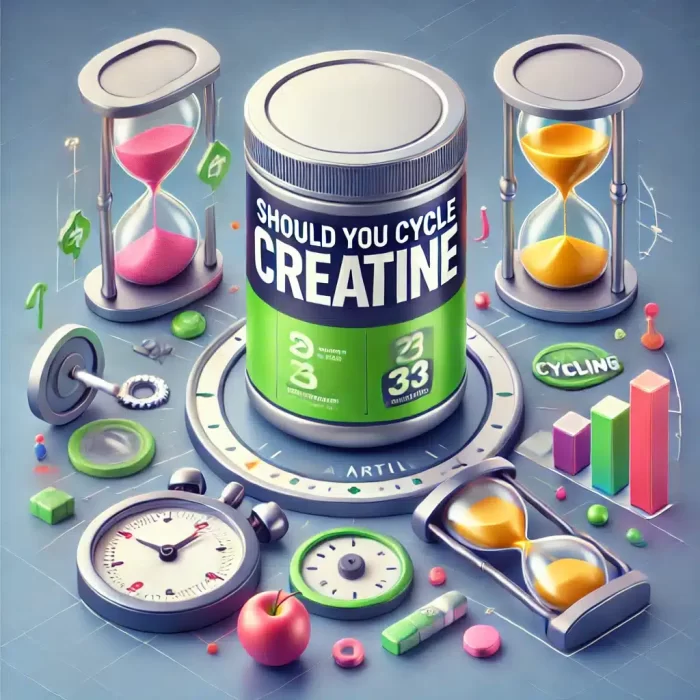
While most research suggests that cycling creatine is not necessary, there are specific scenarios where taking a break might be beneficial. Some individuals choose to cycle off creatine to manage water retention, and digestive issues, or simply to test how their body responds without it. Below are the most common reasons why someone might consider cycling creatine.
1. To Reset Water Retention and Reduce Bloating
One of the most common side effects of creatine supplementation is mild water retention. Since creatine draws water into muscle cells to enhance performance and recovery, some individuals retain extra water, making them feel bloated or puffy. This is not body fat gain, but it can be uncomfortable, especially for those looking to achieve a leaner physique.
Who Might Benefit from Cycling Off?
- Individuals who feel excessively bloated or “puffy” after taking creatine for long periods
- Those preparing for aesthetic competitions or a cutting phase where a leaner look is desired
- People sensitive to water retention who want to see if taking a break reduces the effect
How Cycling Helps:
Taking a 2-4 week break from creatine allows your body to flush out excess stored water, which may help you feel less bloated. Once you resume creatine, you can adjust your dosage to see what works best for your body.
2. To Test Your Body’s Response Without Creatine
Some people choose to cycle creatine to determine whether it’s making a noticeable difference in their performance, strength, or muscle endurance. Since creatine’s benefits are often gradual and cumulative, it can be hard to tell how much of an impact it’s making until you stop using it.
Who Might Benefit from Cycling Off?
- Individuals who aren’t sure if creatine is helping them and want to assess performance changes
- Athletes or lifters who want to see how they train naturally without supplementation
- People who have been taking creatine for a long time without a break and want to reevaluate its effects
How Cycling Helps:
Taking a short break (2-4 weeks) allows you to see if your strength, endurance, or recovery changes. If you notice significant performance drops, it confirms that creatine was beneficial, and you may decide to resume supplementation.
3. If You’re Not Training as Intensely
Creatine provides the most benefits for strength training, high-intensity workouts, and explosive sports like sprinting or weightlifting. However, if you’re going through a period of reduced training intensity, creatine supplementation may be less necessary.
Who Might Benefit from Cycling Off?
- Individuals taking a break from heavy lifting due to injury, vacation, or personal reasons
- Endurance athletes or casual gym-goers who don’t rely on creatine’s explosive energy benefits
- People transitioning to lighter exercise, yoga, or recovery-focused workouts
How Cycling Helps:
If you’re not pushing your muscles to their max, your body won’t require as much ATP regeneration. Cycling off creatine during these periods allows you to resume supplementation when your training intensity increases again.
4. If You’re Experiencing Digestive Issues
For most people, creatine is easy to digest and has no major side effects. However, some individuals experience bloating, cramping, or mild stomach discomfort, especially when taking too much creatine at once.
Who Might Benefit from Cycling Off?
- Individuals who experience bloating, diarrhea, or stomach cramps while taking creatine
- Those who suspect creatine is causing digestive discomfort and want to test how they feel without it
- People who take other supplements that may also contribute to stomach issues and want to isolate the cause
How Cycling Helps:
Taking a few weeks off creatine can help you determine whether it was the cause of digestive discomfort. If symptoms improve, you can try:
- Switching to creatine hydrochloride (HCl), which is easier on the stomach than creatine monohydrate
- Taking smaller doses throughout the day instead of one large dose
- Ensuring proper hydration, as creatine pulls water into muscles, and dehydration can worsen bloating
5. Psychological Reasons (Avoiding Dependency)
Some people prefer to cycle creatine for mental reasons, rather than physical ones. While creatine is not addictive, individuals may feel that they “need” it to perform at their best. Cycling off allows them to reset their mindset and train without reliance on supplementation.
Who Might Benefit from Cycling Off?
- People who feel mentally dependent on creatine and want to prove they can train well without it
- Athletes who want to develop confidence in their natural performance
- Individuals who take multiple supplements and want to minimize long-term dependency
How Cycling Helps:
Taking a mental break from supplementation can help people train naturally, refine their diet, and assess performance without creatine. When they return to creatine, they often appreciate its benefits more and use it with a healthier mindset.
6. If You’re Cutting Weight or Preparing for a Competition
Creatine is often used during bulking and strength-building phases because it helps increase muscle size, strength, and power output. However, some athletes prefer to cycle off creatine during weight cuts or competition prep to avoid any excess water retention that could affect their physique or weight class.
Who Might Benefit from Cycling Off?
- Bodybuilders preparing for a competition where a leaner appearance is required
- Combat sports athletes (MMA, boxing, wrestling) who need to cut weight for weigh-ins
- Fitness models who need to reduce any water retention before a photoshoot
How Cycling Helps:
Stopping creatine 2-3 weeks before a competition or photo shoot can help reduce any temporary water retention and achieve a drier, more defined look. However, it’s worth noting that this is not necessary for everyone, as water retention from creatine is intramuscular, not subcutaneous (under the skin), meaning it doesn’t affect definition as much as people assume.
When You Don’t Need to Cycle Creatine
For most people, including myself, cycling creatine just isn’t necessary. I’ve researched it, used it consistently, and talked to plenty of other athletes and fitness enthusiasts about their experiences. The science backs up what I’ve seen firsthand there’s no harm in taking creatine continuously, and in most cases, it’s the best approach. Here’s why I don’t bother cycling it and why you might not need to either.
1. I Want Consistent Muscle and Strength Gains
One of the biggest reasons I take creatine year-round is because I want steady, reliable performance in the gym. Creatine works by saturating muscle cells with phosphocreatine, which helps regenerate ATP (energy for muscles). When I stop taking it, my muscle creatine stores gradually decrease, and I start to feel a slight dip in strength and endurance.
I’ve tried cycling off creatine before, and while I didn’t lose muscle, I did notice that my workouts felt a bit harder, especially those explosive lifts and high-intensity sets. For me, it’s just easier to stay consistent and keep my muscles fully loaded.
2. I Care About the Cognitive Benefits
Most people think of creatine as just a gym supplement, but it’s great for brain function too. Studies show that creatine supports memory, mental clarity, and cognitive processing, especially for those who don’t get enough from their diet (like vegetarians and vegans).
I’ve personally noticed that taking creatine daily helps me stay sharp and focused, whether I’m training or working on something mentally demanding. If I were to cycle off, I’d risk losing some of these benefits, and for me, it’s just not worth it.
3. I Don’t Experience Any Side Effects
If creatine were giving me bloating, stomach discomfort, or any negative side effects, I’d reconsider taking it daily. But for me and most people, it’s one of the safest and most well-tolerated supplements out there.
I use high-quality creatine monohydrate and mix it in my drinks, and I’ve never had issues with digestion or water retention. Since I feel good about it and my performance stays strong, there’s just no reason for me to stop taking it.
4. I’m Using a Maintenance Dose, Not Megadosing
Some people worry about overloading their system with creatine, but the reality is that after the initial loading phase, I only take 3-5 grams per day which is exactly what the body needs to keep muscle creatine levels saturated.
There’s no evidence that this small, steady dose harms the body or requires cycling. Research shows that taking creatine daily at maintenance levels is perfectly safe, even for long periods. Since my goal is performance and recovery, not rapid bulking, a low daily dose works best for me.
5. I Want to Keep My Training as Effective as Possible
When I hit the gym, I want to make the most out of every session. Creatine helps me push through tough sets, lift heavier, and recover faster, so why would I take a break from something that’s helping?
Some people like to cycle off creatine to see if they need it, but for me, it’s pretty obvious. When I train hard, I want to be at my best, and keeping my creatine levels optimized lets me train at full capacity, every single session.
What Happens If You Stop Taking Creatine?
If you stop taking creatine, your body will gradually return to its natural baseline creatine levels over two to four weeks. Since creatine helps muscles store water, one of the first noticeable changes is a slight decrease in water retention, making muscles appear less full and leading to a small drop in body weight (typically 1-3 pounds). However, this does not mean actual muscle loss, just a reduction in intracellular water.
In terms of performance, creatine enhances ATP production, so stopping it may result in slightly reduced energy output, particularly in explosive exercises like weightlifting or sprinting. You might feel a bit more fatigued during high-intensity workouts or notice a minor decrease in endurance, but these effects are gradual and won’t significantly impact your overall strength if you maintain proper training and nutrition. Recovery time may also be slightly longer, as creatine helps with muscle repair and reduces post-workout inflammation.
One common concern is whether stopping creatine affects the body’s natural production, but research confirms that any temporary suppression is fully reversible. Once supplementation stops, the body resumes normal creatine synthesis within a few weeks.
While some choose to cycle off creatine to reset water retention or test their performance without it, there is no harm in taking it continuously. If you stop but continue training with the same intensity and follow a well-balanced diet, you will retain most of your progress. If performance declines noticeably, you can always resume supplementation and regain the benefits quickly.
How to Cycle Creatine (If You Choose To)
Although cycling creatine is not necessary for most people, some prefer to follow a structured supplementation plan that includes periodic breaks. Cycling can be useful for individuals who want to test their body’s response without creatine, minimize water retention, or simply take a temporary break from supplementation. If you decide to cycle creatine, there are a few different approaches, depending on your goals.
Traditional Creatine Cycle (Loading, Maintenance, Off-Cycle)
This is one of the most common creatine cycling methods and is designed to rapidly saturate muscles, maintain high creatine levels for a set period, and then allow the body a short break before restarting.
- Loading Phase (Optional):
- Take 20 grams of creatine per day, split into four 5-gram doses, for 5-7 days.
- This phase rapidly increases muscle creatine stores, leading to faster performance benefits.
- Some people skip this phase and go straight to a maintenance dose, which works just as well but takes 3-4 weeks to reach full saturation.
- Maintenance Phase:
- Take 3-5 grams per day for 6-8 weeks to maintain elevated muscle creatine levels.
- This ensures steady strength, endurance, and recovery benefits without overloading the body.
- Off-Cycle (Break Phase):
- Stop taking creatine for 2-4 weeks before restarting the cycle.
- This allows the body to return to natural creatine production and reset any potential water retention.
This method is best suited for individuals who want to test how their body functions without creatine or those who prefer periodic supplementation instead of continuous use.
Alternative Approaches to Cycling Creatine
Not everyone follows a strict loading-maintenance-off cycle. Here are other common cycling strategies:
1. 3 Months On, 1 Month Off
- Take 3-5 grams of creatine daily for three months, then stop for one month before resuming.
- This cycle is a simple way to give the body a break while still benefiting from creatine during the training phases.
- Ideal for those who train seasonally or want a structured supplement routine.
2. Straight 8-Week Cycle
- Use creatine daily for 8 weeks, then take 4 weeks off before restarting.
- This approach is often used by those who prefer to follow a time-based supplementation schedule.
- May help individuals who experience bloating or mild digestive issues reset their system.
3. Intermittent Use (Training Days Only)
- Take 3-5 grams only on workout days instead of daily.
- This strategy may reduce overall creatine intake while still providing benefits during intense training sessions.
- Suitable for individuals who engage in occasional high-intensity workouts rather than daily weightlifting.
4. Cutting and Bulking Phases
- Some bodybuilders and athletes take creatine only during bulking phases to maximize muscle growth and strength, then cycle off during cutting phases to minimize water retention.
- This method is mainly for those who are focused on physique and competitive bodybuilding rather than year-round strength and endurance.
Does Cycling Creatine Have Any Advantages?
While most research supports continuous creatine supplementation, some people feel more comfortable taking periodic breaks. Potential benefits of cycling include:
- Avoiding long-term water retention (for those sensitive to bloating).
- Testing performance differences between being on and off creatine.
- Minimizing psychological dependence on supplementation.
- Resetting digestive tolerance if bloating or stomach discomfort occurs.
However, these benefits are not scientifically necessary for the vast majority of people.
Final Verdict: Should You Cycle Creatine?
For most people, cycling creatine isn’t necessary. Long-term studies show that daily creatine supplementation is safe and effective, without the need for breaks.
However, if you experience bloating, or digestive issues, or just want to test your body’s response, cycling may be a reasonable option. Ultimately, whether you cycle or take it continuously, creatine remains one of the best supplements for strength, endurance, and overall performance.
If you’re seeing positive results and experiencing no negative effects, there’s no harm in taking creatine daily, and plenty of benefits to keeping it in your routine.
